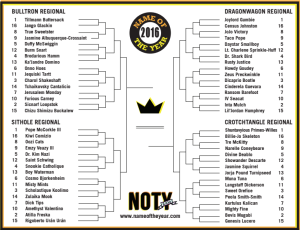For both the men’s and women’s basketball programs at the University of Washington, this season has been among the more entertaining in recent memory. They’ve been entertaining for different reasons, though, and Monday, March 21 marked the clearest divergence yet.
The women, seeded seventh in the Lexington Regional of the NCAA tournament, started the day off in the afternoon with a stunning 74-65 upset over No. 2 Maryland, a team widely regarded as a Final Four contender. The two keys were the UW’s play during the third quarter — the Huskies outscored the Terrapins by a 20-8 margin — and, as always, the presence of junior guard Kelsey Plum. The nation’s third-leading scorer (at 26.2 points per game) poured in 32 and dished out seven assists, helping the Huskies advance to the Sweet Sixteen for the first time since 2001, where they’ll face third-seeded Kentucky on the Wildcats’ home floor this Friday at 4 p.m. PDT.
A few hours later, the men fell 93-78 to San Diego St. during the second round of the NIT, finishing the season with a record of 19-15. It was a contest that featured all the hallmarks of this particular group of Huskies: Spectacular plays in transition, a bevy of blocked shots, and superb individual offense mixed unpleasantly with disastrous foul trouble, an ineffective defense, and the inability to collect defensive rebounds.
It’s that first set of traits — the highlight-reel plays and the jaw-dropping talent — that have made Lorenzo Romar’s team such a treat to follow. All year long, the Huskies flew around at a breakneck pace; win or lose, they always put on a show. It was truly a unique roster, including one of the greatest scorers in school history (Andrew Andrews, who moved onto third on the school’s all-time list in his final game), the UW’s single-season record-holder for blocked shots (Malik Dime), plus DeJounte Murray and Marquese Chriss, two transformative talents who will be NBA lottery picks whenever they so choose.
Continue reading “Purple Monday: The Agony And The Ecstasy Of UW Hoops”

